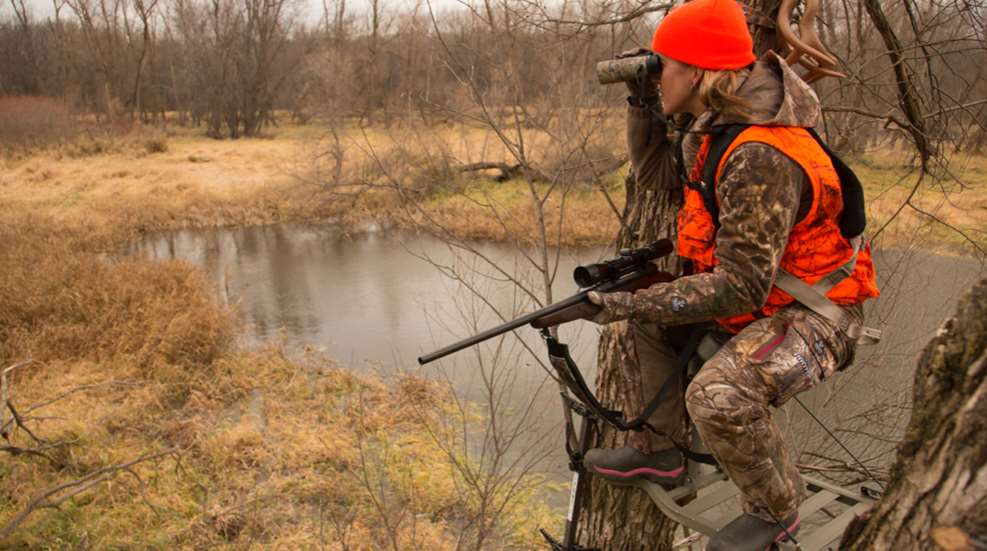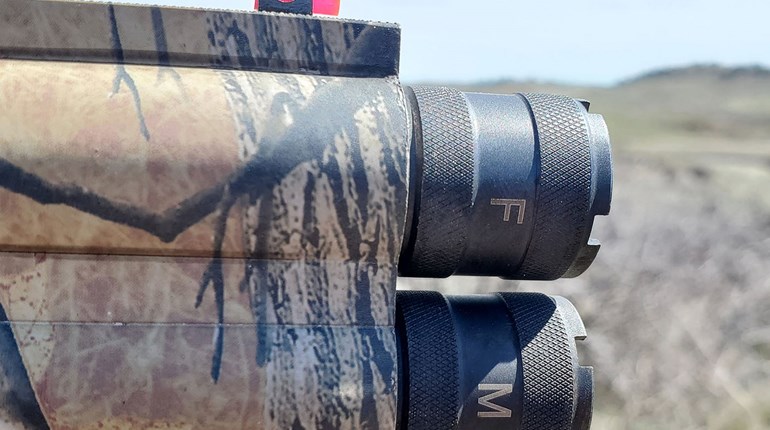
When I post gun- or hunting-related updates on social media, my non-hunting friends often laugh and comment that I might as well be speaking a foreign language. In a way, they’re right: Like any other sport or hobby, I suppose, hunting has its own language. The lingo can be intimidating to those who aren’t in the loop. If you’re new to hunting, you might not know the most basic terms that seasoned hunters toss around in casual conversation. Here’s a primer on some of the most common lingo you might come across:
Season (n.) Season refers to the time frame during which hunting is legally permitted, or open, for a given species or a given method of take. For example, a state might have a deer season, and within that deer season there might be archery season, rifle season and muzzleloader season. “Hunting season” is also a generic term that generally refers to any time any sort of hunting is open, primarily in the fall/winter.
License (n.) Hunters must purchase a hunting license in each state they will be hunting. Costs vary widely by state. Hunters who reside in that state will buy a resident license, which is usually less expensive than a non-resident license. In some states, your license serves as your tag for some species (see next definition).
Tag (n.) In many states, hunters must have a tag for each individual animal (usually big-game only) they harvest. Some tags come with the license, some must be purchased separately, and some must be applied for with no guarantee of receiving the tag in a given year. Most states require the tag to be physically attached to the animal immediately after the harvest.
OTC Tags (n.) Over-the-counter tags can be purchased without an application process. They are easy to get and are usually sold anywhere hunting licenses are sold.
Tag/Bag (v.) To fill your tag or otherwise harvest the animal(s) you were pursuing.
Draw (n.) To receive a tag you applied for. The odds of drawing a tag vary widely depending on state and species, with some having a once-in-a-lifetime limit.
Preference Points (n.) In some states, mostly in the West, hunters who apply for a tag but do not draw it accumulate preference points. Each point increases your odds of drawing the tag next year by putting your “name in the hat” more times. You build up these points over the seasons.
Stamp (n.) A stamp is a special type of permit—often an actual stamp that you can purchase at your local post office—that is required for hunting a particular species. By far the most common example is the Federal Duck Stamp, which costs $25 and is required to hunt waterfowl. It is good for one full hunting season.
Blind (n.) A small structure in which a hunter hides to wait for game. Permanent blinds are usually made of wood, plastic or metal. Pop-up or portable blinds are usually made of fabric with support poles. Dry-field waterfowl hunters have special “layout blinds” that resemble fabric coffins the hunters can sit up out of quickly, and duck hunters sometimes use pit blinds, which are structures built in a hole in the ground.
Stand (n.) A treestand; an elevated platform a hunter sits in or on while waiting for animals. Common varieties include ladder stands (a rigid structure accessed by an attached ladder), hang-ons (a rigid structure attached to the tree but not to a ladder; can be accessed via a detached ladder or tree steps screwed into the tree) and climbers (two-part stands that the hunter sits in and physically uses to climb to her desired height).
Limit (n.) The number of animals you are permitted to shoot. There are season limits (e.g., two turkeys per season), daily limits (e.g., six ducks per day) and possession limits, which indicate the number of animals you may have in your possession—usually twice the daily limit.
Big Game (n.) A bit of a nebulous term, but in general, it refers to deer-sized mammals and larger, including bears, elk, moose, pronghorn and others.
Varmint (n.) Also a bit nebulous, the term “varmint” typically refers to small animals that are considered pests. This includes raccoons, groundhogs, squirrels, assorted rodents, and maybe coyotes depending on who you ask.
Migratory (adj.) Describes species that migrate; in hunting, this is most commonly applied to migratory birds, which includes waterfowl, doves and other species. To hunt migratory birds, hunters are required to obtain a HIP permit (see next definition).
HIP (n.) HIP stands for Harvest Information Program, and a HIP permit is a requirement for hunting migratory birds. The HIP is usually only a couple dollars or free, purchased in conjunction with your hunting license, and to obtain it, hunters simply answer a few questions about what species they hunted last year and approximately how many birds they harvested. This information is used by biologists to keep tabs on game populations and set bag limits for future seasons.
Fair Chase (n.) A principle embraced by American hunters. Fair chase is the ethical, sportsmanlike and lawful pursuit of free-ranging game in a way that does not give the hunter an unfair advantage.
Boone & Crockett (n.) An organization that keeps records of the largest big game taken in North America (as long as it was taken according to fair chase principles). To be entered in the record book, an animal must be measured by one of the organization’s official scorers. Other recordkeeping organizations include Pope & Young (archery only) and Safari Club International.
Booner (n.) An animal that meets the minimum requirements to be listed in the Boone & Crockett record book, or general slang for “a really big deer.”
Hunt Club (n.) An organization that allows its members to hunt on its property in exchange for yearly dues and usually some hunting-related chores. Sizes vary widely. Belonging to a hunt club is a popular method of accessing hunting land in the South in particular.
Call (v.) To call an animal in is to attempt to lure it to the hunter’s location by mimicking a particular sound. Some calls mimic the sound of the animal itself—turkey hunters try to sound like a female turkey and duck hunters try to sound like ducks, etc. Other calls mimic the sound of a particular scenario—deer hunters might bleat like a lost fawn or rattle antlers together to sound like fighting bucks. Predator hunters use prey-in-distress calls to mimic the sound of an injured or dying rabbit, for example, to lure in hungry coyotes or foxes.
Band (n.) A metal ring placed around the leg of an animal, typically a bird, and most commonly waterfowl. The band will have a phone number and identification number on it. If a hunter shoots a banded bird, they should call the phone number and report where the bird was shot. This helps biologists track the movement of migratory waterfowl and monitor populations, which helps in setting future bag limits. Bands are highly sought after and often worn as trophies around a duck hunter’s call lanyard. It’s not uncommon for a band to be recovered thousands of miles away from where the bird was originally banded.
DNR (n.) Department of Natural Resources. This goes by different names in different states—Department of Wildlife, Department of Fish & Game, Game Commission, etc.—but in each case, it’s the agency that regulates hunting and fishing in that state.
Typical/Non-Typical (n.) A description of a deer or elk’s antlers. Typical antlers are generally symmetrical, with the same number of points on each side. Non-typical antlers are anything else, often including “stickers” (small points coming off an antler) or the rare but coveted drop tines (an antler point that angles downward instead of up).
Glass (v.) To sit in a fixed location, typically a high spot, and use binoculars or a spotting scope to search the surrounding terrain for animals.
Spot-and-Stalk (v.) To find an animal, often by glassing, and to sneak up on it in an attempt to get close enough for a shot.
Still-Hunt (v.) To slowly, quietly and methodically sneak through the woods searching for game, stopping frequently to watch, listen and wait.














































